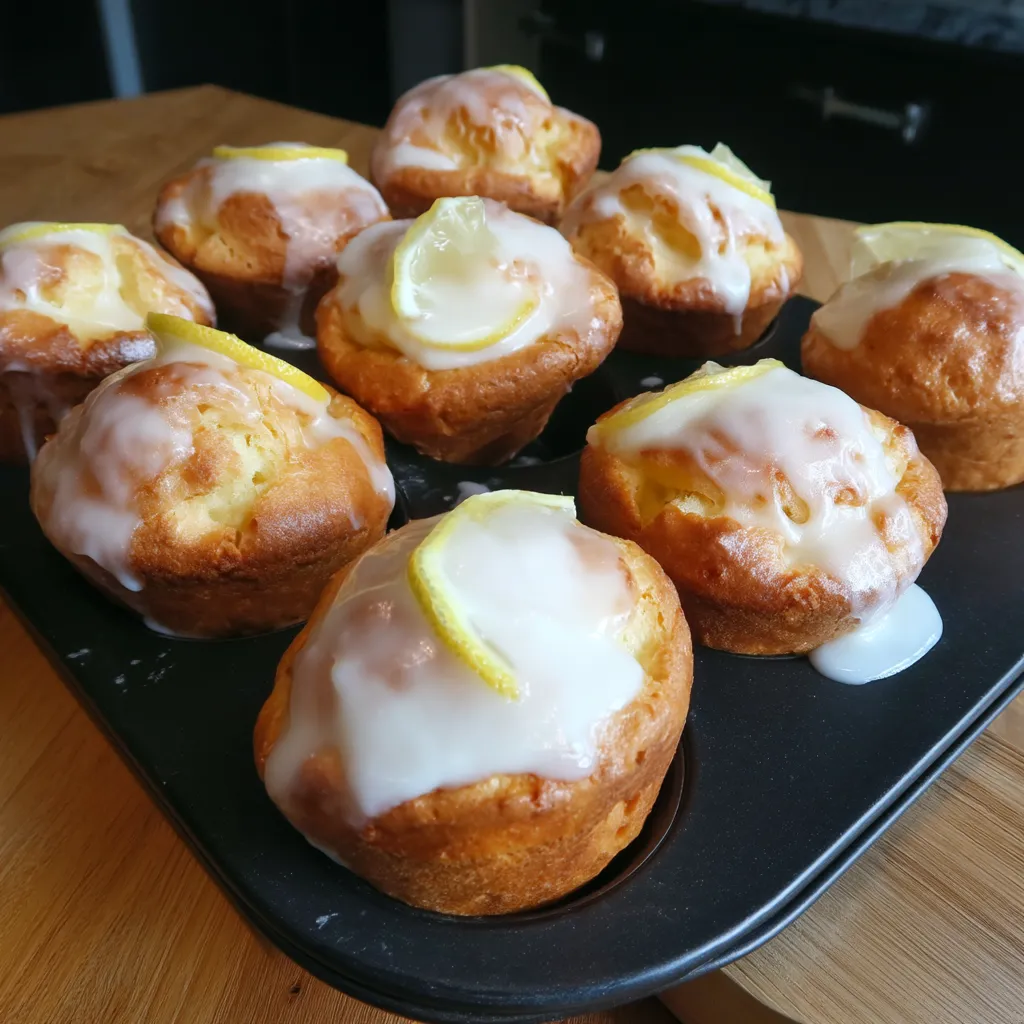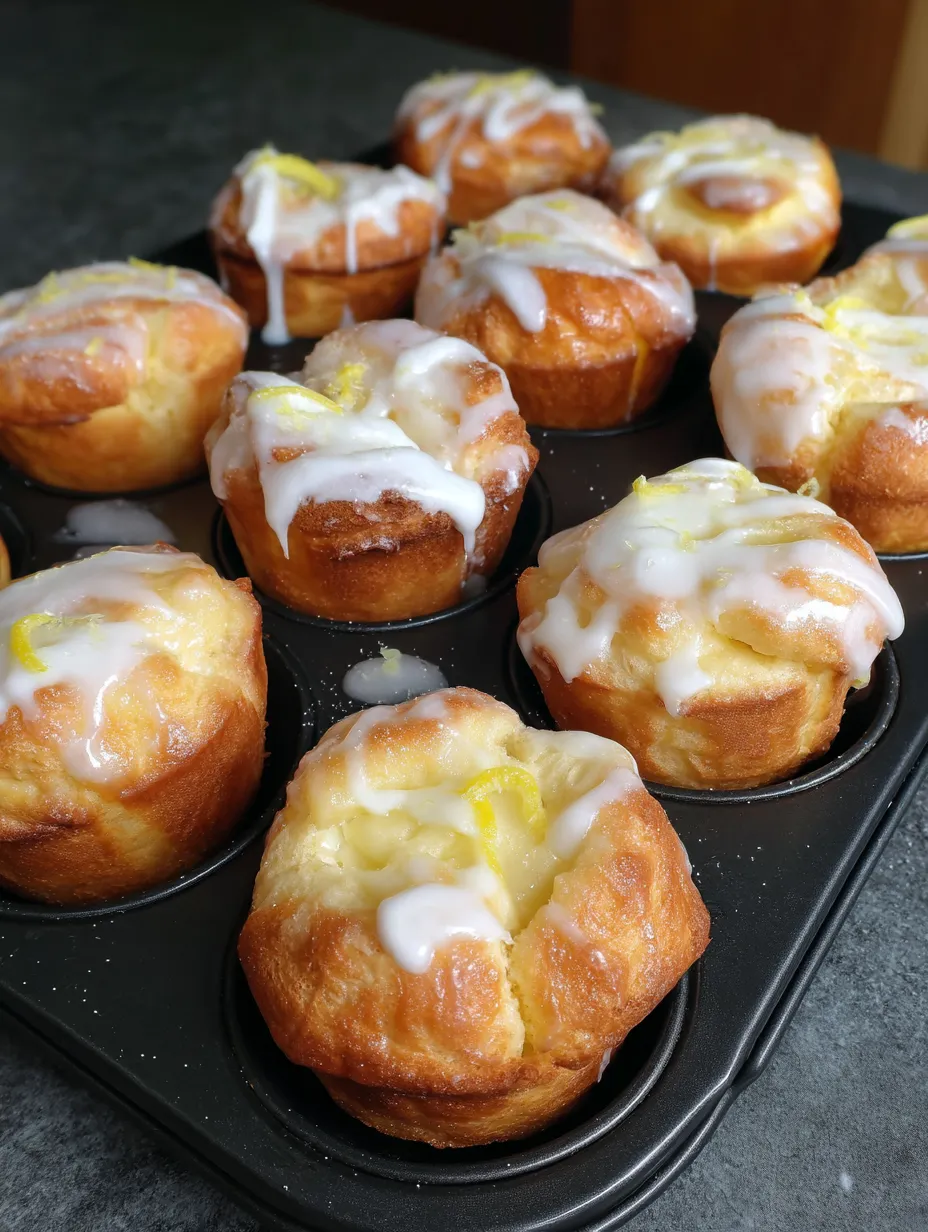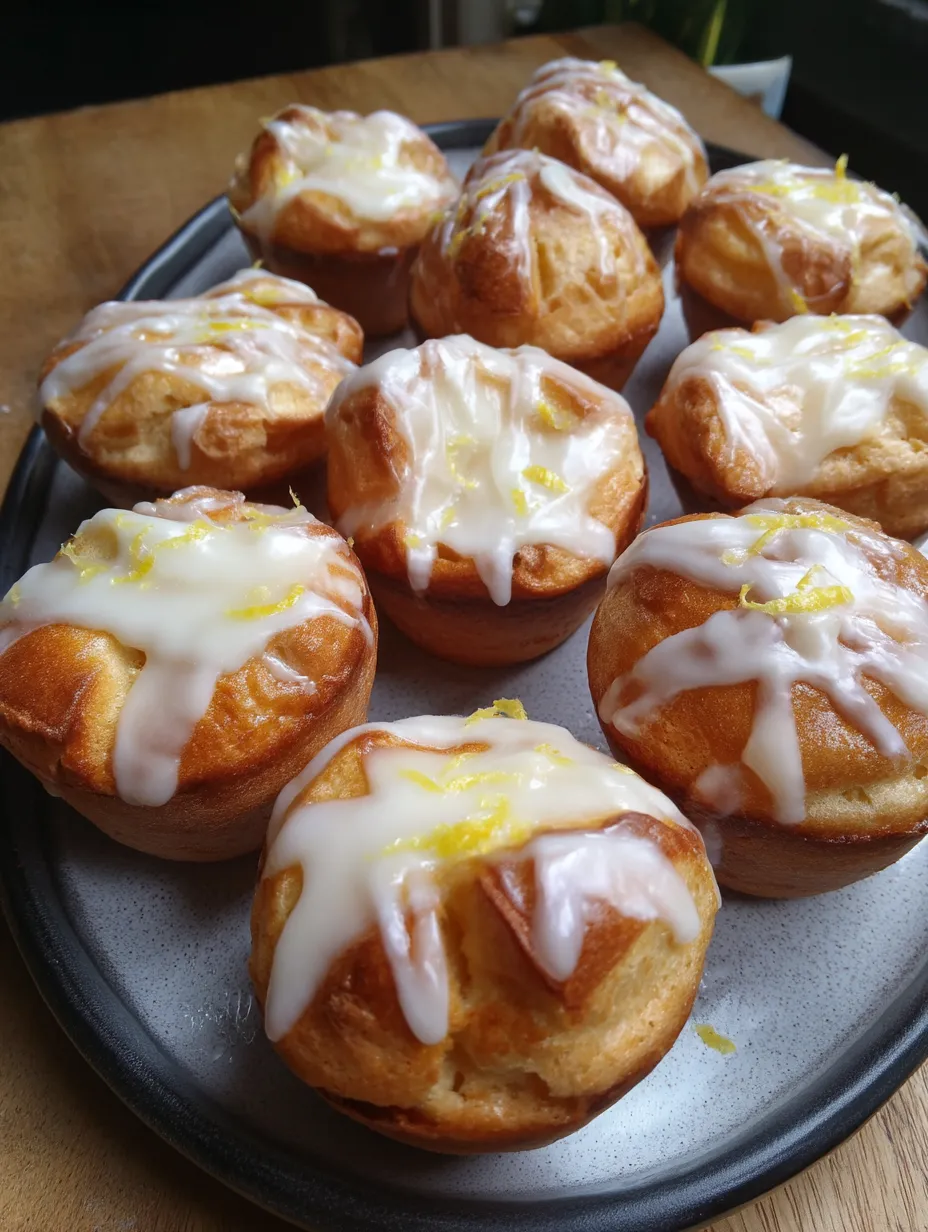 Pin it
Pin it
This airy Portuguese pastry has been my secret weapon for brunch gatherings. Cavacas combine the magic of popovers with a bright lemon glaze, creating a treat that's both familiar and delightfully different. With a crispy exterior and light interior, they're the perfect balance of textures and flavors that keeps everyone asking for the recipe.
I first discovered cavacas during a Portuguese cooking class and was amazed by how something so simple could taste so extraordinary. Now they're my signature contribution to family brunches, especially during holiday gatherings.
Ingredients
- 8 eggs: at room temperature essential for maximum volume and proper rising
- 2 cups flour: provides structure while keeping the interior tender
- 1 cup oil: creates that signature crisp exterior
- ½ cup milk: adds richness and helps with the airy texture
- 1 teaspoon vanilla extract: provides subtle aromatic sweetness
- 2 cups icing sugar: creates the perfect glaze consistency
- Lemon zest: adds bright flavor that balances the sweetness perfectly
- 2 tablespoons milk: for the glaze adjust for desired thickness
Step-by-Step Instructions
- Prepare for Baking:
- Preheat your oven to 350°F and thoroughly grease your muffin tins. The greasing is crucial as these will puff dramatically and might stick otherwise. For mini muffins, prepare a 24 count tin. For standard size, use two 12 count tins.
- Beat the Batter Extensively:
- Combine all batter ingredients in your mixer and beat continuously for a full 20 minutes. This is not a typo. The extensive beating incorporates air bubbles that create the characteristic airy texture and dramatic rise. The batter will become lighter in color and increase in volume noticeably.
- Fill the Tins Properly:
- Pour the batter into your prepared tins filling mini muffin tins or popover tins about three quarters full. For standard muffin tins fill only halfway as they will rise significantly. Avoid overfilling as they need room to expand.
- Bake with Patience:
- Bake on the middle rack for 45 minutes for a slightly moist interior or up to 1 hour for a drier result. The cavacas will puff dramatically and turn a beautiful golden brown. Resist opening the oven during the first 30 minutes as this can cause deflating.
- Cool Strategically:
- Allow cavacas to cool in the tin for 5 minutes before transferring to a wire cooling rack. They will deflate slightly as they cool which creates the perfect cavity for glaze or fillings. Let them cool completely before glazing.
- Create the Perfect Glaze:
- Mix icing sugar with milk and lemon zest in a small bowl until smooth. The consistency should be thick enough to coat but thin enough to drip slightly down the sides. Adjust with tiny amounts of milk or sugar to reach the perfect consistency.
- Glaze with Flair:
- Spoon the glaze over each cooled cavaca or dip the tops directly into the glaze for an even coating. Allow the glaze to set slightly before serving. For an extra special touch fill the center with whipped cream lemon curd or pudding.
 Pin it
Pin it
My Portuguese grandmother taught me to add a pinch of lemon zest to the batter as well as the glaze which creates an incredible aromatic quality. She would make these every Sunday morning and the smell would waft through the house waking everyone with the promise of these delicious treats.
The Secret to Perfect Cavacas
The magic of cavacas lies in the extraordinary beating time. Many first timers are skeptical about beating batter for a full 20 minutes but this is what creates the signature texture. Your mixer will incorporate thousands of tiny air bubbles that expand during baking creating that honeycomb interior. If your cavacas aren't rising properly insufficient beating time is almost always the culprit.
Serving Suggestions
Cavacas shine brightest when served alongside strong coffee or tea, creating a perfect balance to their subtle sweetness. In Portugal they're often enjoyed mid-morning with espresso or as part of a dessert spread. For a more substantial dessert presentation arrange them on a platter with fresh berries and a dollop of whipped cream. They also pair beautifully with citrus fruits or a small scoop of vanilla ice cream for a more indulgent treat.
 Pin it
Pin it
Storage and Make-Ahead Tips
While cavacas are best enjoyed the day they're made they can be stored in an airtight container at room temperature for up to two days. The glaze will soften them slightly which some people actually prefer. You can also freeze unglazed cavacas for up to a month then thaw at room temperature and apply fresh glaze before serving. If making ahead for a special occasion prepare the batter and bake them the morning of your event then glaze just before guests arrive.
Cultural Significance
These delightful pastries have deep roots in Portuguese cuisine dating back centuries. Traditionally made in specialized copper molds cavacas were once reserved for special celebrations and religious festivals. The name "cavaca" actually refers to the cavity or "cave" that forms in the center perfect for holding the sweet glaze. In northern Portugal they're particularly associated with Easter celebrations while in the Azores they're a year round treat enjoyed by locals and visitors alike.
Frequently Asked Questions
- → What makes cavacas unique?
Cavacas are known for their light and airy dough, crisp exterior, and soft center. The long beating of the batter creates the signature puffiness during baking.
- → How is the lemon icing prepared?
The icing is made with icing sugar, lemon zest, and milk. Add milk or sugar as needed to adjust the consistency to your liking.
- → What type of bakeware can I use?
You can use mini muffin tins, regular muffin tins, or specific popover tins. Ensure the tins are greased before use.
- → Can cavacas be filled?
Yes! Once cooled, cavacas can be filled with whipped cream, lemon curd, or pudding for added flavor and texture.
- → How should cavacas be served?
They are best eaten fresh on the same day. Serve them with coffee during breakfast, brunch, or as a dessert.
